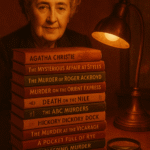Beyond the Canon: Non-Mainstream Voices in Indian Independence Literature
Introduction: Reading Beyond the Canon
When we think of Indian Independence literature, the mind recalls Nehru’s Discovery of India or Gandhi’s Hind Swaraj. These texts became national symbols, taught and quoted widely. Yet, beyond this canon lies a body of writing that carried resistance in different ways—folk songs sung in villages, women’s voices recorded in diaries, regional short stories printed in small journals. These works, often forgotten, tell us what freedom meant beyond political speeches and party manifestos.
Folk Literature: The People’s Pulse
Resistance did not belong only to polished essays. It echoed in the voices of farmers, weavers, and laborers. Folk ballads in Awadhi, Bhojpuri, and Punjabi carried messages of courage and loss. Songs about Bhagat Singh spread from mouth to mouth, bypassing censorship. Village theatre, or nautanki, staged the struggle as lived reality, mixing satire and hope. While English and Hindi literature found publishers, these oral traditions remained fluid—traveling through memory rather than books.
Dalit Voices: Freedom’s Unfinished Promise
Independence brought questions of equality. Writers from Dalit communities challenged a freedom that ignored caste oppression. Baburao Bagul’s Marathi stories, and later Namdeo Dhasal’s poems, revealed a raw anger that mainstream literature avoided. They asked: what good is political freedom if social chains remain? These voices reminded us that 1947 was not an ending, but the beginning of another struggle—for dignity within the nation.
Women’s Writings: Diaries, Memoirs, and Silence
Women did not only support movements—they documented them. Sarojini Naidu’s poems celebrated freedom with lyrical passion, but the quieter writings matter too. Diaries of women in Bengal and Punjab recorded displacements during Partition. Amrita Pritam’s Pinjar (The Skeleton) became one of the most haunting accounts of violence and gendered loss. These narratives, often sidelined, carried a different perspective: freedom as both triumph and trauma.
Regional Short Stories and Journals
Outside the metropolitan presses, regional journals became hubs of debate. In Malayalam, Vaikom Muhammad Basheer wrote stories of common lives caught in turbulence. In Urdu, Saadat Hasan Manto captured the brutality of Partition with piercing honesty. Bengali journals carried short fiction that critiqued both colonial rule and nationalist patriarchy. Many of these works were not labeled “Independence literature,” yet they shaped how ordinary people understood freedom.
Why Non-Mainstream Matters Today
Mainstream texts gave us the ideals of freedom. Non-mainstream literature gave us its textures—the hunger, fear, displacement, and resilience. To revisit these works is to see Independence not only as a political event but as lived experience. They remind us that the struggle for justice, equality, and dignity did not end in 1947.
Expanding the Archive
Reading non-mainstream Independence literature opens a wider horizon. It shows how resistance took many forms—songs, stories, poems, testimonies. These voices, once sidelined, now ask us to expand the archive of memory. True freedom lies in acknowledging them.
Also Read
Red-Light Realities: Trisha Mishra on Menstrual Dignity and Sex Workers’ Rights in India


